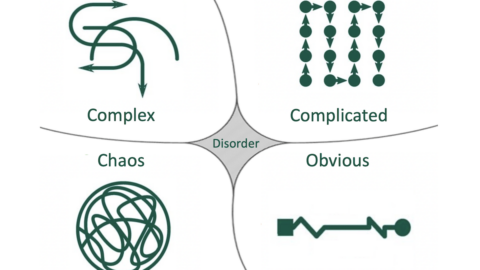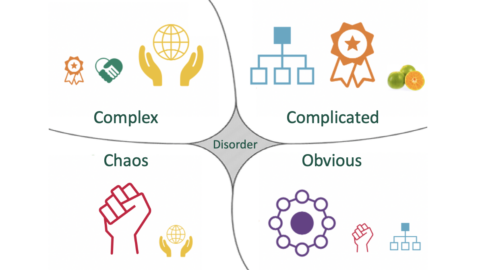Recognizing the Limits of the Traditional Model
No one can deny today’s constant acceleration of the world. In a context of increasing uncertainty and complexity, the capacity to adapt has become the cornerstone of organizational sustainability.
However, gaining agility may seem a daunting challenge for structures shaped by decades of Taylorist and managerial principles, which extolled planning, process optimization, and the perpetual search for productivity gains. This focus on continuous process improvement has certainly enabled undeniable performance increases. But over time, limitations have emerged: focused on short-term efficiency, this model sometimes forgets to question its ability to adapt to fundamental transformations in its environment.
Yet, a certain awareness is gradually emerging. More and more leaders and collaborators sense the exhaustion of organizations formatted primarily to execute in a stable environment. They foresee the need to endow their enterprise with the qualities of a living organism, capable of transforming without losing its deep identity.
This is the whole challenge of what we call “adaptive organizations”: organic entities, intelligently distributed, that would know how to combine structure and flexibility to remain fully relevant regardless of emerging challenges. But moving towards greater agility raises complex challenges. Let’s look at this without prejudice to open up new paths.
A Crucial Issue of Talent and Purpose for New Generations
The new generations, in particular, are in search of more autonomy, meaning, and flexibility. Attracting these talents and retaining them in the long term calls for a profound rethinking of inherited organizational models in favor of more organic and collaborative forms of work.
Open offices, remote work, and flexible hours have become normalized after the COVID-19 crisis and are no longer sharp competitive advantages for an employer brand. To continue offering a stimulating work environment and to meet the autonomy needs of new generations, organizations are beginning to question the traditional paradigm from which the entire management system derives.
The Limits of Hyper-Specialization
The inherited model of Taylorism, which confines collaborators to specific tasks, has certainly brought productivity gains in production environments. But over time, its limits and rigidities have become apparent, hindering organizations: sealed compartmentalizations, loss of the big picture, cumbersome decision-making processes, and above all, a lack of space for innovation.
The Temptation of “All Transversal”
To respond to this, many companies have multiplied inter-service project teams and various collaborative initiatives. A commendable intention, but not without pitfalls: collaborators find themselves torn between their assigned team and a nebulous secondary belonging not always well articulated. This sometimes opens the door to a certain organizational confusion and an increasing difficulty for collaborators to know which project to prioritize, especially when the lack of resources and time is widespread.
The Path to a New Paradigm
In light of this, new models are emerging, reconciling structure and flexibility. The challenge is significant: how to harmoniously combine the specialization of expertise and transversality, performance and innovation, control and autonomy?
Rather than opposing these dimensions, it is appropriate to reconcile them in a clever balance. And to consider the organization as a living organism, certainly structured in complementary functions, but also endowed with a formidable collective intelligence thanks to the complementarity and interconnections between these functions.
A Deep Cultural Transformation
This paradigm shift goes beyond simple procedural adjustments. It’s about rethinking what an organization is – not just a mechanical and planned structure, but a dynamic ecosystem of individuals and teams in fruitful interactions.
This cultural evolution requires modesty and patience. It builds on the expertise of the collaborators themselves to identify priority areas of tension or harmful compartmentalization to be addressed. Then, progressively, to design with them new, more modulable and empowering work modalities.
Putting Your Organization into Motion
On the basis of the major principles mentioned, each company can initiate its transformation towards greater agility. Concretely, here are some deep principles to rely on to become an agile and vibrant organization:
- Leadership as a role of coordination and clarification of interfaces between teams, projects, services;
- The formation of modulable teams according to challenges;
- The involvement of collaborators in the deep purposes of the organization;
- A culture that encourages risk-taking and experimentation.
More Than Just a Model
There is no single solution or “magic recipe.” Every organization already contains the seeds of life and collective intelligence that must be revealed and nurtured.
The journey is ongoing to become an organization that is as lively and agile as it should be. But it is worth the commitment! Let’s be confident in the unsuspected vitality of organizations when dormant energies are awakened!












